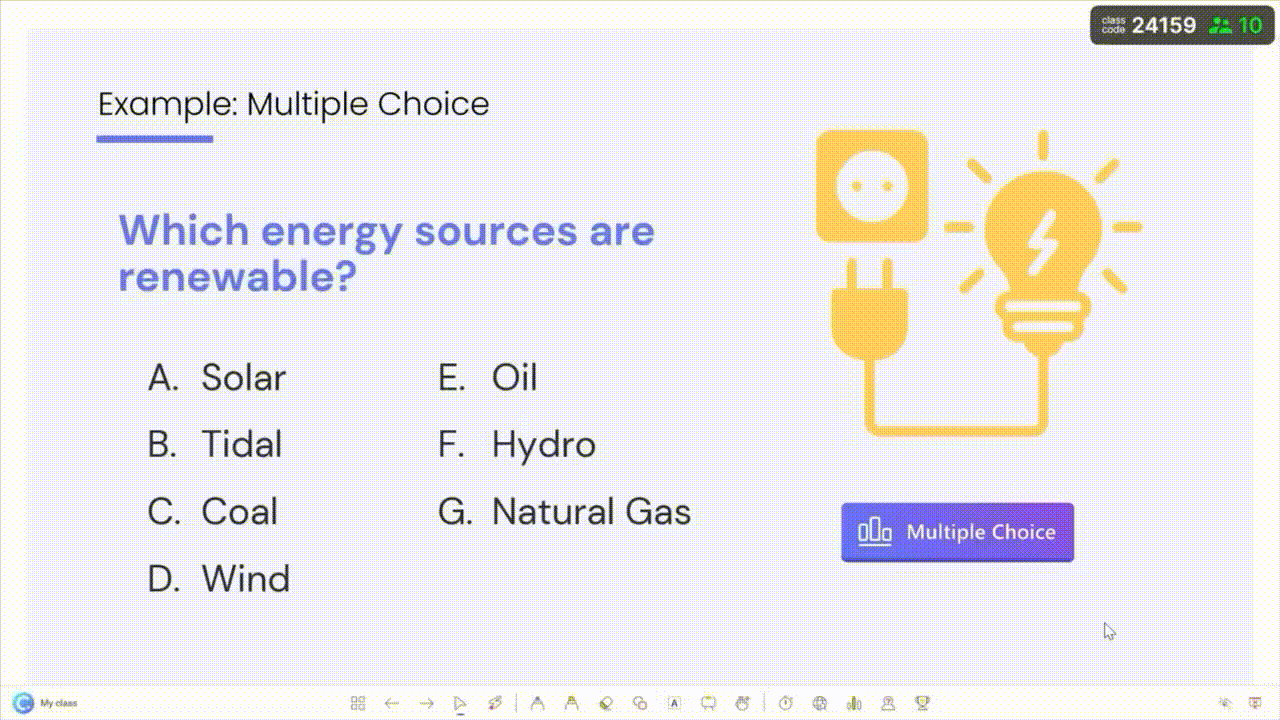Classroom discussion is one of the most powerful ways to spark learning. When students share ideas with one another, they build collaboration and see knowledge from different sides. A good discussion also gives teachers a window to measure student engagement in real time.
The challenge is making sure every voice is part of the exchange. If only a few students talk, you miss the chance to capture the thinking of the whole class. The key is to design discussion in ways that invite broad audience participation and make every student feel ready to contribute.
With the right steps, classroom discussion turns into a tool for both teaching and learning. It creates space for collaboration, checks understanding as it happens, and keeps students active in the flow of the lesson.
In this guide, you will find clear strategies you can apply right away. Each one is a practical answer to the question of how to run classroom discussion so it is engaging, and productive for every student.
1. Start with a one-word poll or image prompt
The first step in building classroom discussion is lowering the barrier to entry. If students are asked to share long answers right away, many will hold back. A one-word poll or a thought-provoking image works better because it invites everyone to respond quickly and easily.
When students see their answers appear on the board, it creates a sense of shared starting ground. They are more willing to continue the talk because they already contributed something.
Sample prompts to kick off discussion:
- In one word, describe today’s reading
- Share one feeling this picture gives you
- What is the first word that comes to mind when you think of fairness
- Pick one word to describe your weekend
- Which single word best explains what teamwork means to you
- Choose one word that sums up what you learned last week
To spark further inspiration, check out this Ultimate List of 275 Poll Questions on Everything!
2. Use anonymous submissions to include quiet students
Every class has a mix of outspoken students and those who hesitate to speak. Giving the option to submit ideas without attaching names ensures that everyone has a voice. Anonymous submissions shift the focus away from who is speaking and onto the value of the idea itself.
This method helps quieter students participate on equal footing. It also gives the teacher a more complete picture of what the entire class is thinking instead of hearing only from the same few voices.
3. Keep the thread alive with follow-up prompts
A discussion loses energy when the teacher accepts a single answer and then moves on. To build depth, follow-up prompts should invite students to react to one another and expand the conversation. The goal is to make each answer the beginning of a thread rather than the end.
Teachers can prepare a set of guiding prompts that fit different purposes. This way, every answer becomes an opening for the next student to contribute.
| Situation | Follow-up prompt | What it encourages |
|---|---|---|
| A student gives a correct answer | Can someone explain why this is correct | Builds reasoning |
| A student shares an opinion | Who has a different point of view | Surfaces diverse perspectives |
| A student brings up an example | What other examples connect to this one | Expands evidence |
| A student disagrees | How can we link both ideas together | Encourages synthesis |
4. Rotate student moderators to own the discussion

A strong classroom discussion does not have to be led by the teacher every time. Handing over the role of moderator to a student builds ownership and helps peers take the talk more seriously. Students can use simple prompts or question stems provided ahead of time to keep things moving.
When students guide their classmates, the discussion feels less like a teacher checking answers and more like a shared activity. This approach trains leadership skills and keeps energy high because the spotlight shifts from one voice to many.
Confidently let students take center stage with our helpful guide on How to Help Students Master Presentations in a Way They’ll Actually Enjoy.
5. Add drawings or mind maps before speaking
Not every idea is easy to put into words right away. Asking students to make a quick drawing, chart, or mind map before talking gives them a clear starting point. This helps them organize their thoughts and gives visual learners another way to engage in classroom discussion.
To make this work smoothly, teachers should prepare a few basic tools in advance.
☑ Whiteboard space for sketching or mapping
☑ Digital tools that allow simple drawings
☑ Clear instructions with an example template
☑ A short time limit to keep the pace steady
6. Turn disagreement into deeper thinking with sentence stems
When students disagree, it can either shut down the talk or push it forward. The key is teaching them how to respond with respect and curiosity. Sentence stems give them the language to keep the classroom discussion moving in a productive way.
Here are examples you can use:
- I disagree → What evidence supports your idea?
- I think differently → Can we compare both answers side by side?
- That does not match my view → What might make both points true in different situations?
- I see it another way → How can we connect these two perspectives?
7. Wrap up with a one-sentence reflection or word cloud
Every discussion needs a clear close. Ending with a one-sentence reflection or a shared word cloud helps students see what the group learned together. This reinforces key points and makes sure the classroom discussion leaves a lasting takeaway.
The best part is that you can collect these final thoughts quickly without losing momentum. And here is a bonus tip. With the right tools that support live responses, this wrap-up step can be captured and displayed instantly, turning your class reflections into a shared record. That is exactly what we will look at next.
Bonus Hack: Making Classroom Discussion Easier with ClassPoint
Most teachers already rely on PowerPoint to guide their lessons. It is the default tool in classrooms and feels second nature to both teachers and students. What many do not realize is that PowerPoint can also become a live discussion platform without adding extra apps or switching screens.
That is what ClassPoint brings in. ClassPoint is a PowerPoint add-in that places interactive teaching tools directly on your slides. You teach the way you always do, but now students can join in with their devices, and every strategy above becomes much easier to carry out.

Here is how classroom discussion works better with ClassPoint:
- Interactive quizzes and polls. Insert multiple choice, fill-in-the-blanks, or quick poll questions right into your deck. Students respond from their devices, and results display instantly on the slide to spark group talk.
- Anonymous responses. When students submit short answer responses through ClassPoint, names can be hidden. This helps quieter students share ideas safely and ensures all voices are heard during discussion.
- Whiteboard and annotation tools. Turn any slide into a whiteboard or annotate over content in while in live slide show. You can also open student submissions directly on the slide with the Slide Drawing activity type, letting their drawings become their responses.
- Gamification elements. Award stars during discussion, show a leaderboard, or use the name picker to call on students. These tools keep participation lively and balanced without putting anyone on the spot.
- Reports after class. All student submissions are saved in the ClassPoint web app. Teachers can review, reflect, or share highlights later, so discussions extend beyond the live session.
With these features, PowerPoint shifts from being only a presentation tool to becoming an interactive classroom hub. The slides you already use become a place for real conversation, and balanced participation that sticks.
